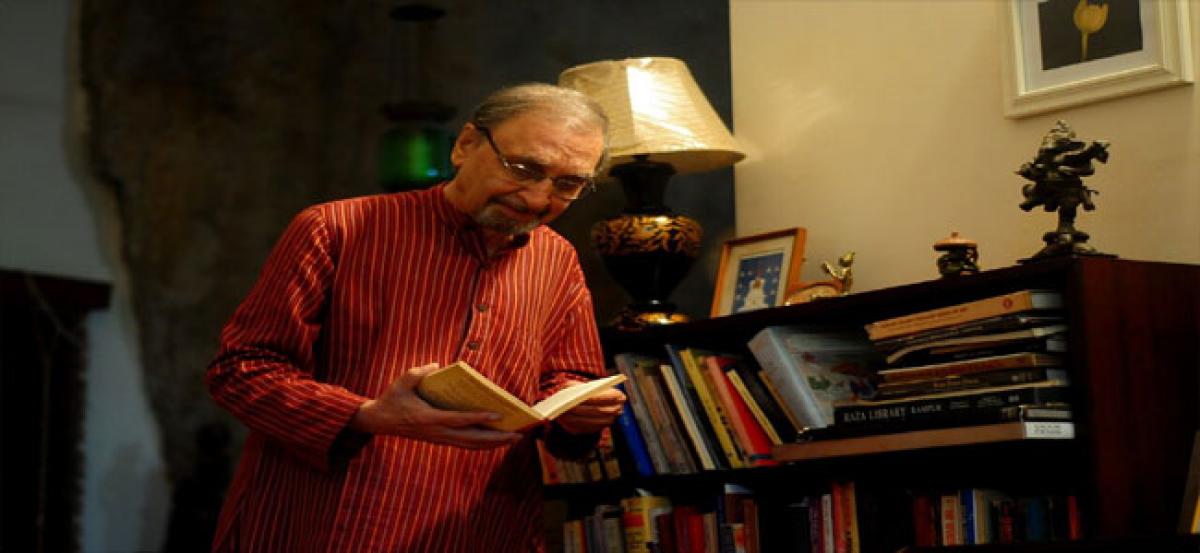Live
- A Guide to Temperature and Humidity Standards in Data Center Server Rooms
- Gadwal collector briefs on details of voters
- Jupally Krishna Rao takes part in Alampur rallu
- Bharath Prasad files 3rd Nomination
- Baisakh Month: A Time of Auspicious Beginnings and Sacred Festivals
- Oust BJD govt for overall development, says Shah
- Unveiling the Hidden Gems: Surprising Health Benefits of Garlic Peels
- Overcoming Sleep Struggles: A Comprehensive Guide to a Restful Night
- RTC bus hit the auto
- MLA Kuchukula Rajesh Reddy participated in the Birappa festival
Just In

An eminent writer, columnist and former civil servant, Narendra Luther is authority on history of twin cities. The 85-year-old historian recently wrote his autobiography titled The Bonsai Tree. He has won numerous awards, including seven awards for his Urdu books and two international awards for one of his documentaries. Narendra Luther shared his experiences and extensive knowledge about Secunder
Secunderabad: An eminent writer, columnist and former civil servant, Narendra Luther is authority on history of twin cities. The 85-year-old historian recently wrote his autobiography titled The Bonsai Tree. He has won numerous awards, including seven awards for his Urdu books and two international awards for one of his documentaries. Narendra Luther shared his experiences and extensive knowledge about Secunderabad with The Hans India.
Secunderabad is known to be the first cantonment in India. It is named after the Nizam III, Sikander Jah; In 1806, heaccepted the request of Captain Sydenham, the Resident, to name the cantonment after him. Speaking about the title of his book, Lashkar-The Story of Secunderabad, Luther said, “In 1798, a milestone treaty was signed by Nizam and East India Company, as a part of which six battalions of the subsidiary forces of the company were stationed on the northeast of Hussainsagar Lake.
The encampment was called Lashkar—army camp. The tented habitation expanded to 5.2 Sq kilometres.”
Recallingthe then Secunderabad, he said the town planning was exemplary, the residents encouraged sports and there was a huge cultural difference between Hyderabad and Secunderabad.
“The Tank Band was the line between these two cities and that side of the city(Secunderabad) was well-built and clean. There was freedom of expression and women were also given their due importance. In fact, everything new and pioneering came from the cantonment area. Whereas this side of the Tank Band was medieval.
” Speaking about how the inhabitants of Secunderabadwere not willing to merge with the State, Luther said, “In 1939, when the idea of bringing Secunderabad into the State government, a cross section of citizens of Secunderabad submitted a memorandum to Lt Col. J E B Scrafton, President of Cantonment Board of Secunderabad, requesting particular kind of administration, lifestyle and other conditions entirely different from those living in Hyderabad.”The rendition was signed six years later in 1945.
Over the years, Secunderabad has completely transformed but Luther believes that till date the best part of it is the Secunderabad Club.Spread over 20.5 acres, this club is considered as one of the six best clubs in the country. Mentioning about the iconic places in cantonment, he said, “General Bazaar, the main business centre, branched into several specialised market segments like the Secunderabad market, Monda market and HandiMarket, which now has a large number ofjewellery shops besides general merchandise.
The Clock Tower is a symbol of the city in answer to Charminar of the old city. It stood amidst a park occupying an area of 2.5 acres.”Jagirdar’sCollege became an important educational institute for the sons of nobles of Hyderabad. It is now known as the Hyderabad Public School. Reminiscing the very first suit he bought in Hyderabad in 1958, Luther said John Burton was the most fashionable draper and tailor. The nobility and gentry of Hyderabad got their clothes tailored by him.
Secunderabad is also home to many well-known and historic churches, mosques, tombs, and temples. Though the number of Parsis and Anglo Indians has decreased over the year their presence is still felt. A few eminent personalities who were residents of Secunderabad include Raja DeenDyal, Dr M Chenna Reddy, ShyamBenegal, Sir Ronald Ross, BajiKishen Rao, Dr J Geeta Reddy, Diana Hayden and Mithali Raj.
By Tera Sneha Reddy

© 2024 Hyderabad Media House Limited/The Hans India. All rights reserved. Powered by hocalwire.com







